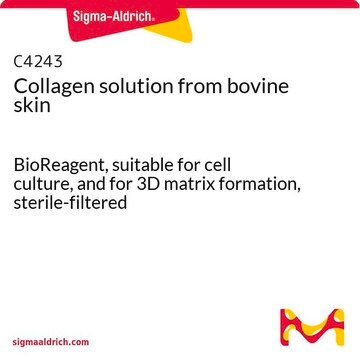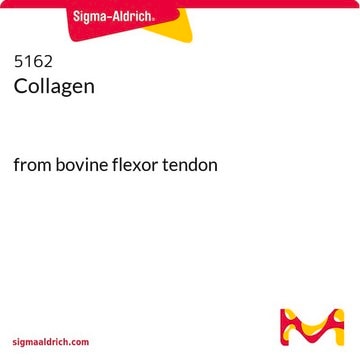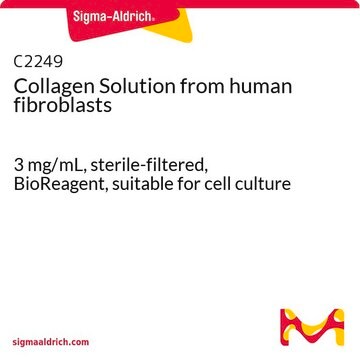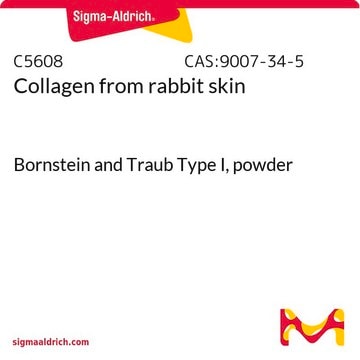C7661
Rat Collagen Type I
from rat tail, powder, suitable for cell culture
About This Item
Produtos recomendados
product name
Colágeno, Bornstein and Traub Type I, powder, BioReagent, suitable for cell culture
fonte biológica
rat tail
linha de produto
BioReagent
forma
powder
peso molecular
120—160 kDa
embalagem
glass bottle of 5 mg
técnica(s)
cell culture | mammalian: suitable
cobertura de superfície
6‑10 μg/cm2
solubilidade
soluble
nº de adesão NCBI
nº de adesão UniProt
Especificidade de ligação
Peptide Source: Fibrinogen
Peptide Source: Laminin
temperatura de armazenamento
2-8°C
Informações sobre genes
rat ... Col1a1(29393)
Procurando produtos similares? Visita Guia de comparação de produtos
Descrição geral
Aplicação
- Immunohistochemistry
- Cellular activity assays
- Used in generation of dorsal root ganglion (DRG) explant cultures
- Used as one of the components during the preparation of the functionalized surface (in NMR setup)
- Used in cell culture (the glass coverslips were coated with nanowires at high concentrations mixed with collagen)
- Used for biofunctionalization of the microchannels
Ações bioquímicas/fisiológicas
Nota de preparo
Outras notas
Código de classe de armazenamento
11 - Combustible Solids
Classe de risco de água (WGK)
WGK 1
Ponto de fulgor (°F)
Not applicable
Ponto de fulgor (°C)
Not applicable
Equipamento de proteção individual
Eyeshields, Gloves, type N95 (US)
Certificados de análise (COA)
Busque Certificados de análise (COA) digitando o Número do Lote do produto. Os números de lote e remessa podem ser encontrados no rótulo de um produto após a palavra “Lot” ou “Batch”.
Já possui este produto?
Encontre a documentação dos produtos que você adquiriu recentemente na biblioteca de documentos.
Os clientes também visualizaram
Artigos
The extracellular matrix (ECM) is secreted by cells and surrounds them in tissues.
Cancer stem cell media, spheroid plates and cancer stem cell markers to culture and characterize CSC populations.
Nossa equipe de cientistas tem experiência em todas as áreas de pesquisa, incluindo Life Sciences, ciência de materiais, síntese química, cromatografia, química analítica e muitas outras.
Entre em contato com a assistência técnica












